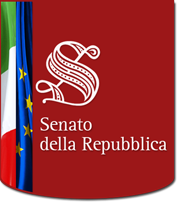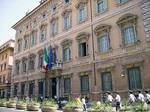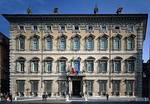Introduction
In 1478, the land on which Palazzo Madama was built was given to France by the monks of the Farfa Imperial Abbey to accommodate French pilgrims in Rome.
The first important refurbishment works were carried out when the building was acquired by the Medici family. Architect Giuliano Sangallo renovated it and what was left of the library of Giovanni de' Medici - son of Lorenzo the Magnificent who was to become Pope Leo X - was moved there after the Medici family had been ousted from Florence. When Leo X died in 1521, Palazzo Madama passed to his cousin Giulio de' Medici, who had lived there for a long time before becoming Pope under the name of Clement VII. In 1534, it was inherited by Alessandro de' Medici, who died in 1537, whereupon his widow Margaret of Austria enjoyed it in usufruct. She was the illegitimate daughter of Emperor Charles V of Habsburg, become Duchess consort of Parma and Piacenza by marriage. She was called "la Madama" (the "Mistress") and the building she chose to live in was named after her. The building remained a property of the Medici family and the Grand Dukes of Tuscany until the 18th century.
Major renovation works were carried out in the 17th century: a baroque façade designed by Paolo Marucelli and completed in 1642 replaced the older asymmetric pediment and the interior was enriched with decorated ceilings and friezes under the supervision of Romano Monanni. The Medici family, however, did not use the building until 1725, when Violante Beatrice of Bavaria, sister-in-law of Gian Gastone de' Medici, the last member of the House of Medici, moved to live there. Palazzo Madama then experienced its final period of splendour: parties and balls were held there, and first the Academy of Arcadia and then the Accademia dei Quirini were based in the building.
When Gian Gastone died in 1737, the Grand Duchy of Tuscany passed from the House of Medici to the Lorrainers, with Palazzo Madama included in the properties. In 1755, it was purchased by Pope Benedict XIV and became a government building of the Holy See. Substantial refurbishment works were undertaken again: a second courtyard was opened in the area which now accommodates the Senate Main Chamber and Luigi Hostini redesigned the square in front of the main entrance. Later, the offices of the Court of Justice and the Police Headquarters were housed there. This is the reason why the local population still often refer to the police as "la Madama".
Moreover, in 1798-99, Palazzo Madama accommodated the central office of the French-client Roman Republic. Subsequently, Pope Pius IX moved the Finance and Public Debt Ministry there, and, reportedly, in 1850 the drawing of lotto numbers was transferred from Palazzo Montecitorio - now main building of the Chamber of Deputies - to the balcony of Palazzo Madama. The Pontifical Post Office was relocated here in 1851.
When Rome became the capital of Italy, in February 1871 Palazzo Madama was chosen to house the Senate of the Kingdom. This required new changes to reorganise the building: Architect Luigi Gabet decided to close the courtyard of the Post Office in order to create the Main Chamber, where the Senate held its first sitting on 28th November 1871.
Palazzo Madama now houses the Senate Chamber, the offices of the President, Bureau, Parliamentary Groups and Secretary General of the Senate and their staff and the offices most directly involved in parliamentary business.









